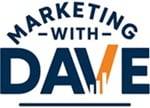Brief Summary

In 2014, the ALS Ice Bucket Challenge became a global viral social media sensation.
Participants filmed themselves dumping ice water on their heads and nominated friends to do the same, all to raise awareness and donations for amyotrophic lateral sclerosis (ALS).
Widely shared by celebrities and everyday people, the challenge engaged over 17 million participants worldwide and raised roughly $115 million ($220 internationally) for ALS research.
It created a cultural moment and demonstrated the power of fun, user-driven marketing campaigns for social causes.
Company Involved
ALS Association: The American nonprofit organization dedicated to ALS research and patient care (see als.org).
Marketing Topic
- Social Media Marketing
- Viral Marketing
- Influencer Marketing
Public Reaction or Consequences
Viral Sensation: The campaign dominated social media and news. Facebook users posted over 17 million Ice Bucket videos and countless celebrities (Bill Gates, Justin Timberlake, Leonardo DiCaprio, etc.) took the challenge. It became a global meme.
High Praise (and Some Criticism): Public response was largely positive; ALS donations and awareness surged. However, critics called it “slacktivism” and noted issues like waste of water and occasional self-promotion.
Media Buzz: Coverage was intense across outlets (Time, CNN, BBC, etc.), making ALS a trending topic. No legal backlash occurred, instead, the campaign boosted ALS’s brand and cultural relevance.
Why It Matters Today
Power of Simplicity: The Ice Bucket Challenge proves that a simple, easy-to-share idea can explode on social platforms.
Influencer and Community Leverage: It shows how tapping networks, friends nominating friends, celebrities amplifying reach, can rapidly scale a campaign.
Cause Marketing Blueprint: Modern nonprofits and brands still use challenge-based campaigns, think TikTok or Instagram trends, learned from this success.
Digital Activism: In an age of memes and influencer economy, the case highlights how entertainment and philanthropy can combine to engage younger audiences.
Trust and Transparency: It underscores that even fun campaigns must maintain clear purpose and accountability, relevant to today’s emphasis on ethical marketing and data privacy.
3 Takeaways
1. Keep It Simple and Shareable: The Ice Bucket Challenge’s easy rules, dump ice water, post video, nominate, drove massive sharing. Clear calls to action make campaigns go viral.
2. Leverage Networks and Celebrities: Personal nominations and A-list participants rapidly expanded the campaign’s reach. Engaging influencers can catapult awareness.
3. Plan for Scale and Transparency: Prepare for success. ALS had to reorganize quickly to manage the surge of funds and maintain donor trust. Always communicate clearly how donations are used.
Notable Quotes and Data
“They inspired over 17 million people around the world… The Challenge raised awareness of the disease worldwide and raised $115 million”.
“Facebook users posted more than seventeen million videos of dousing… countless celebrities—Bill Gates, Justin Timberlake, Leonardo DiCaprio—got drenched for the cause.”
“It raised a reported $220 million worldwide for A.L.S. organizations”.
Full Case Narrative
Volunteers at an Ice Bucket Challenge event rally others to donate and spread awareness of ALS. The Ice Bucket Challenge began as a grassroots effort in the summer of 2014. It originated with friends and families of ALS patients, like golfer Chris Kennedy in Florida and ALS patients Pat Quinn and Pete Frates, connecting an existing ice-water stunt to the disease. Pete Frates posted a viral challenge video on July 31, 2014, and that is widely cited as the turning point when the campaign “really went viral”. Participants would either dump ice water on themselves or donate to ALS research, then nominate others. This simple loop of user-generated videos spread rapidly through Facebook and Twitter.
Major celebrities and public figures soon joined, helping push it global. Figures like Mark Zuckerberg, Oprah Winfrey, and even President Obama, via donation, were connected to the challenge. Media outlets amplified the story daily. By early August, the ALS Association reported an unprecedented influx of donations, over $15.6 million from hundreds of thousands of donors in days. The Association itself had not launched the campaign but quickly embraced it, updating its messaging and donation links to capitalize on the momentum.
By late 2014, the results were historic. Roughly $115 million had been donated to the U.S. ALS Association, compared to about $15 million in the same period the previous year, and global contributions hit around $220 million. ALS research funding and clinics expanded: independent reports note that the challenge enabled dozens of new research grants and even discoveries of new ALS-related genes. Public awareness soared, ALS became a household name, topping Google search charts for 2014.
The campaign also offered lessons. Its success came from a simple, social concept and peer-to-peer network effects. Critics had feared it was just hype, “slacktivism,” but analyses showed lasting benefits. As New Yorker writer James Surowiecki observed, the Ice Bucket Challenge “changed the face of A.L.S. forever”. On the downside, many participants never donated; studies found that most who took the challenge did not give money, so the ALS Association had to navigate a huge, one-time surge and find ways to keep engagement high after the fad faded. In summary, the Ice Bucket Challenge stands as a landmark story in viral social marketing: it achieved extraordinary reach and fundraising by tapping user creativity and networks, but it also showed that sustainable impact requires clear purpose, planning, and transparency.
Timeline (key events)
July 15, 2014: Chris Kennedy posts an early ice-bucket video linking the challenge to ALS.
July 31, 2014: Pete Frates uploads an ALS-tagged challenge video, which sparks a surge in participation.
August 4, 2014: The ALS Association reports receiving $15.6M from new and existing donors in days.
August–October 2014: Donations peak, roughly $115M to ALS Association, and global media coverage spreads awareness.
August 1, 2015: ALS organizations attempt a repeat annual challenge, “Last Summer,” but it gains little traction compared to 2014.
What Happened Next?
After the Ice Bucket Challenge, the ALS Association redirected the windfall into accelerated research, clinical care, and patient services. They published reports showing that the donations funded five new gene discoveries and other breakthroughs. Rather than trying to relive the 2014 frenzy, ALS organizers focused on sustaining the momentum through awareness campaigns and social media, for example, they now promote annual fundraising events online with challenge-style content.
The Ice Bucket Challenge left a mark on the nonprofit sector. Many charities saw how digital, participatory campaigns can engage donors and especially younger audiences. Social-media “challenge” campaigns, like variations of running or jumping stunts, or Movember mustache challenges, became a common tactic. Marketers learned that combining a fun viral element with a clear cause can spark massive engagement. Even today, organizations plan campaigns with shareable hashtags, videos, and personal nomination features inspired by ALS’s model. In short, nonprofits now routinely include social marketing experts and interactive content strategies in their toolbox, a legacy of the Ice Bucket Challenge’s success.
One Sentence Takeaway
Even a fun viral stunt needs a clear purpose and plan: the Ice Bucket Challenge showed that simple, shareable marketing can ignite action, but long-term impact comes from aligning hype with real trust and strategy.
Sources and Citations
TIME: How the ALS Ice Bucket Challenge Actually Started – Timeline of the challenge’s origin, July 2014.
The New Yorker: What Happened to the Ice Bucket Challenge? – Analysis of the viral campaign’s impact, participant numbers, funds raised.
Vox: The Ice Bucket Challenge and the pitfalls of viral charity – Discussion of participation stats and outcomes, 2.4M videos, $115M.
ALS Association: Ice Bucket Challenge Overview – Official summary of the campaign, 17M participants, $115M raised.
The Fiscal Times: How ALS Hijacked the Ice Bucket Challenge and Raised Millions – News report on early fundraising figures, $15.6M by Aug 4, 2014.
Public Relations Case Studies: ALS Ice Bucket Challenge – Academic case study detailing strategy and aftermath, organizational restructuring.
